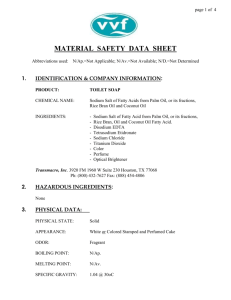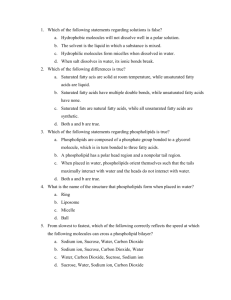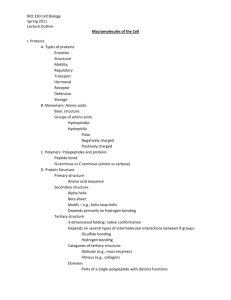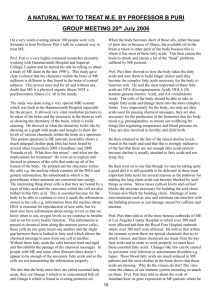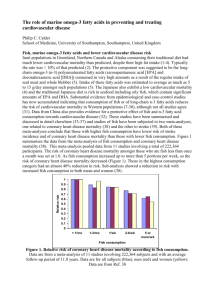Marine Biology (2003) In Press:
advertisement
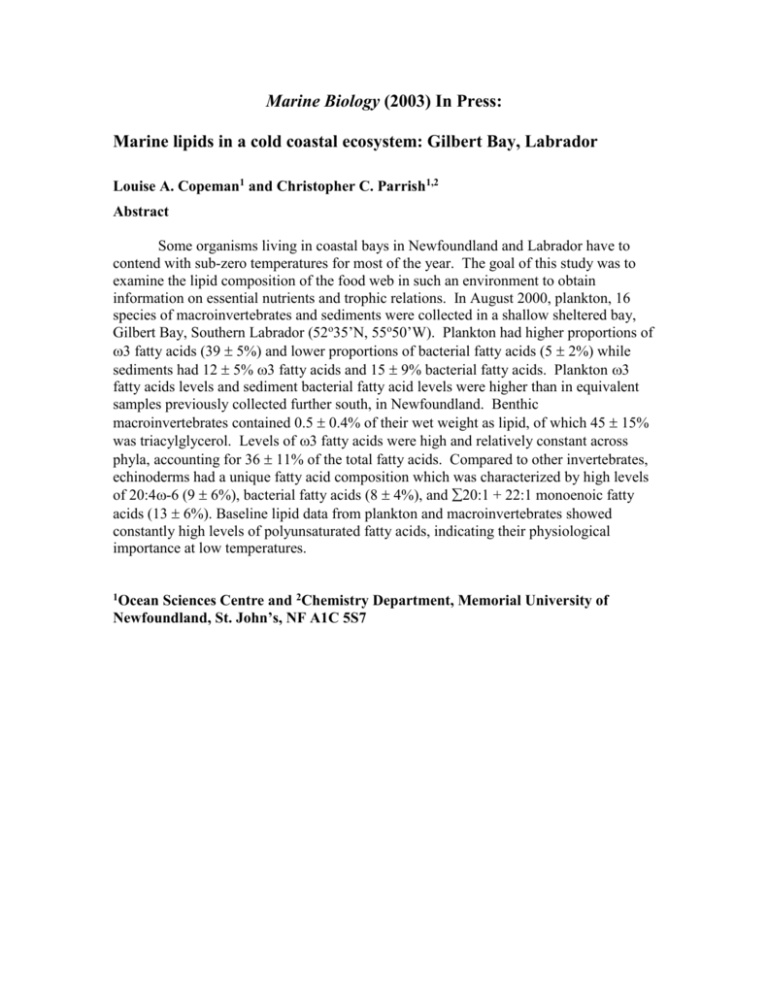
Marine Biology (2003) In Press: Marine lipids in a cold coastal ecosystem: Gilbert Bay, Labrador Louise A. Copeman1 and Christopher C. Parrish1,2 Abstract Some organisms living in coastal bays in Newfoundland and Labrador have to contend with sub-zero temperatures for most of the year. The goal of this study was to examine the lipid composition of the food web in such an environment to obtain information on essential nutrients and trophic relations. In August 2000, plankton, 16 species of macroinvertebrates and sediments were collected in a shallow sheltered bay, Gilbert Bay, Southern Labrador (52o35’N, 55o50’W). Plankton had higher proportions of 3 fatty acids (39 5%) and lower proportions of bacterial fatty acids (5 2%) while sediments had 12 5% 3 fatty acids and 15 9% bacterial fatty acids. Plankton 3 fatty acids levels and sediment bacterial fatty acid levels were higher than in equivalent samples previously collected further south, in Newfoundland. Benthic macroinvertebrates contained 0.5 0.4% of their wet weight as lipid, of which 45 15% was triacylglycerol. Levels of 3 fatty acids were high and relatively constant across phyla, accounting for 36 11% of the total fatty acids. Compared to other invertebrates, echinoderms had a unique fatty acid composition which was characterized by high levels of 20:4-6 (9 6%), bacterial fatty acids (8 4%), and 20:1 + 22:1 monoenoic fatty acids (13 6%). Baseline lipid data from plankton and macroinvertebrates showed constantly high levels of polyunsaturated fatty acids, indicating their physiological importance at low temperatures. 1Ocean Sciences Centre and 2Chemistry Department, Memorial University of Newfoundland, St. John’s, NF A1C 5S7



